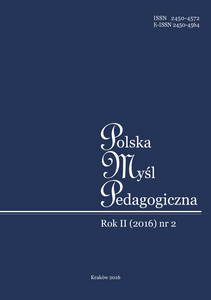Beauty, art and elements of aesthetic education in the Polish writings of the Neo-Thomists of the interwar period
Beauty, art and elements of aesthetic education in the Polish writings of the Neo-Thomists of the interwar period
Author(s): Janina KostkiewiczSubject(s): Sociology of Education
Published by: Wydawnictwo Uniwersytetu Jagiellońskiego
Keywords: Neo-Thomism; beauty; art; aesthetic education; artistic education; humanism;harmony; objectivism; Kazimierz Kowalski; Karol Górski; Barbara Żulińska
Summary/Abstract: Beauty, a property of existence in the Neo-Thomistic view, allows one to perceive it as a property of reality and of human artefacts, including art. It can be found in human behaviour and in the tradition of culture in the form of harmony, perfection and brilliance. An examination of beauty should be subject to the principal rules of study in metaphysics. Beauty is an important factor in the development of personality: it raises and ennobles. The love of beauty incorporates rest and respite, which are necessary for human development. Not being subject to the virtue of prudence, art itself does not seek to make man better, because it is all about creating a work of art. Neo-Thomists see a conflict between morality and art in this fact; the risk does not occur when the artist takes ethics “as his or her own”. In this case, he or she unknowingly creates ethical works or art. Art is undoubtedly of great social importance and it should fulfil an important social mission through aesthetic education by making available to the widest possible group of people truth, beauty and goodness.
Journal: Polska Myśl Pedagogiczna
- Issue Year: 4/2018
- Issue No: 4
- Page Range: 93-112
- Page Count: 20
- Language: English

